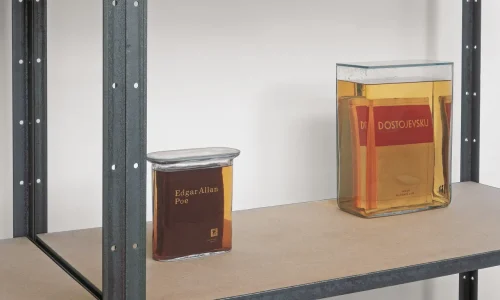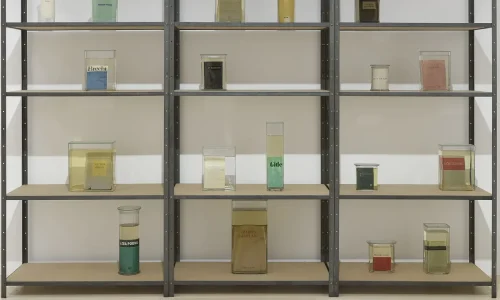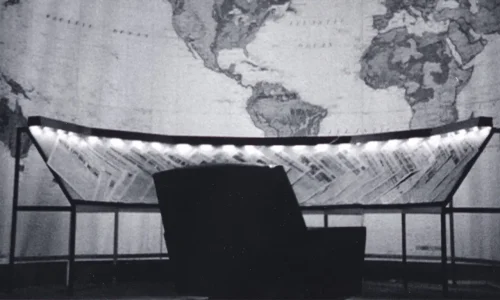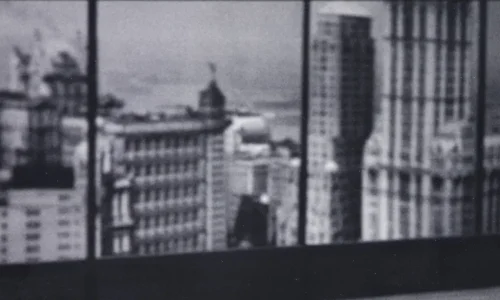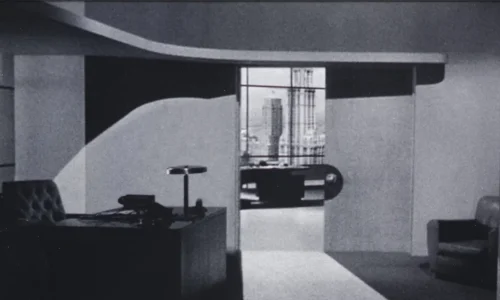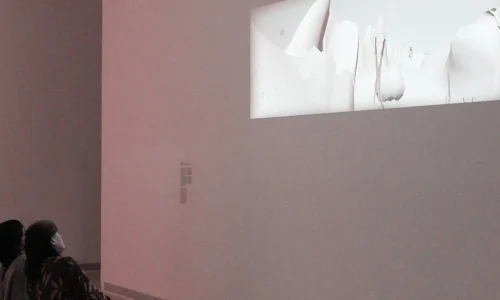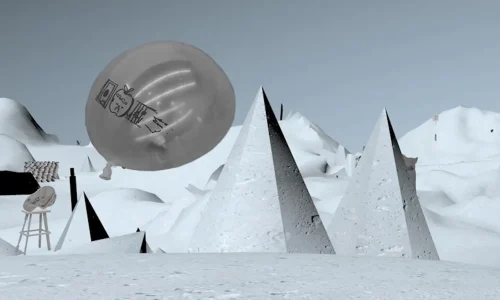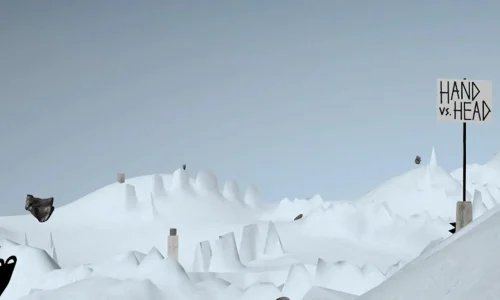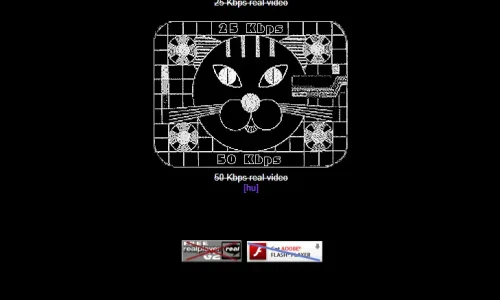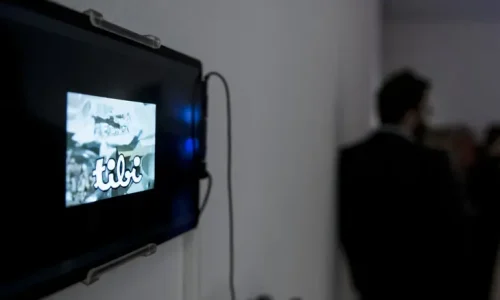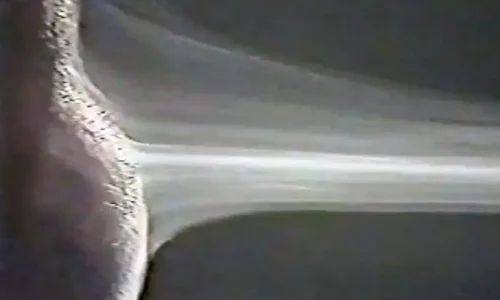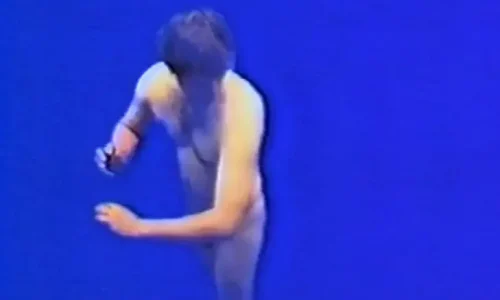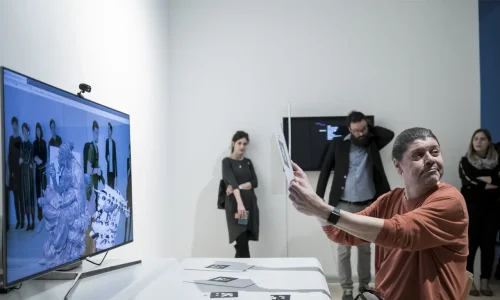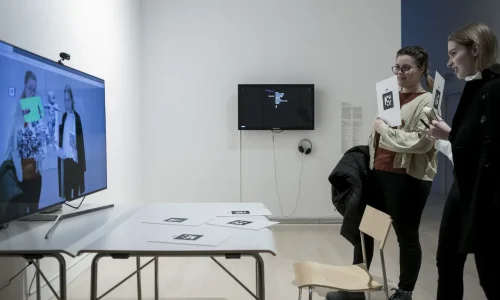"The Dead Web - The End" at the Ludwig Museum
Budapest, Hungary
From January 24th to April 26th, 2020
Artists
“Will the Internet end soon?”
It all began in May 2015, when I read an article on lemonde.fr that spoke of the possibility of a collapse of the World Wide Web. Although this event is largely hypothetical, several articles have been written on the subject in response to a scientific symposium that the Royal Society organized around the Internet Capacity Crunch.
In a context where the network could collapse even before the end of its “adultescence” —in 2023, the Web as we know it will barely be more than 25 years old—we can try to picture the fall of the Web and the after-world that would ensue: Empty server carcasses and a sea of electronic junk? A digital oblivion on all screens? Machines imitating the Web? A handcrafted Internet?
How will the at once dematerialized and delocalized dynamics of power structures be impacted in both their evident economic and inevitably political manifestations if the network is disconnected?
[Nathalie Bachand, Curator]
The Dead Web – The End was presented for the first time at the Eastern Bloc Artist Center in Montreal in January-February 2017, and then at the Mirage Festival in Lyon (France) in April 2019, and finally at the Mapping Festival in Geneva (Switzerland) in May-June 2019.
This project is produced by the Ludwig Museum – Museum of Contemporary Art and Molior. It received support from EMMI (Emberi Erőforrások Minisztériuma), Müpa, Canada Council for the Arts, Conseil des arts et des lettres du Québec, Gouvernement du Québec, Pro Helvetia, Conseil des arts de Montréal, LOJIQ – Les Offices jeunesse internationaux du Québec, Goethe-Institut and Samsung.
The associate partner of the Ludwig Museum – Museum of Contemporary art is C³ – Center for Culture & Communication.
Nathalie Bachand
Nathalie Bachand is an independent curator interested in digital issues and the conditions of its emergence in contemporary art.
Among her curatorial projects, her exhibition The Dead Web – The End, initially presented at Eastern Bloc (2017), has been co-produced by Molior in Europe: at the Mirage Festival in Lyon (2019), at the Mapping Festival in Geneva (2019), and at the Ludwig Museum in Budapest (2020), co-curated with Béla Tamás Kónya; she was guest curator for Art souterrain 2021 Chronométrie; her exhibition project, DataffectS, was presented at the Galerie de l’UQAM (2022); and she co-curated, with Sarah Ève Tousignant, the SIGHT+SOUND 2022 Dancing While Waiting (For the End of the World) festival, organized by Eastern Bloc (2022).
She is a member of the International Association of Art Critics (AICA), writes regularly on visual and media arts, and sits on the Board of Directors at Avatar in Quebec City. Previously in charge of development for ELEKTRA-BIAN (2006-2016), she is currently co-artistic director and project manager for Sporobole. She lives and works in Montréal.
Béla Támas Kónya
Béla Támas Kónya holds a PhD in Media art preservation (theory and practice) and an absolutorium from the Hungarian University of Fine Arts Doctoral School, and he is currently the Head of Conservation at Ludwig Museum – Museum of contemporary art. Since 2008, his primary role has been dedicated to the development and implementation of the collection care strategy, with a focus on contemporary art.
His main responsibilities include managing the Collection Care and Conservation department, the conservation of contemporary art objects and the management of exhibitions. Furthermore, his role involves the promotion of contemporary art, including media art, which belongs to our cultural heritage. He also ensures that cultural diversity is promoted as a fundamental value, and he oversees the design and development of projects which involve close cooperation with national and international partners. Moreover, he administers the Development and implementation of a long-term Collection Care and Digitization Strategy and he is involved in the development of the future Institute of Collection Care Methodology.
Béla Támas Kónya also dedicates much of his time to exhibition coordination and he was the chief curator for the media arts exhibition: “‘Save As…’ – What Will Remain of New Media Art?” held at the Ludwig Museum in 2017. He closely cooperates with contemporary artists, curators and institutions in contemporary art curation, exhibition and conservation projects worldwide (ZKM | Center for Art and Media Karlsruhe, MoMA, MET, Tate, BOZAR, New York University, Goethe-Institut, LIMA, etc.). With his experience and extensive network he seeks to actively contribute to the ongoing research, conservation and preservation of existing and future artworks.
Artists & works
Bálint Bori
Half-Time
2001
Description of the work
In front of us we have a Christmas biscuit box, tea box, a small can, and all sorts of things of this sort, turned into a tower-like construction that constitutes the orchestra, while the solar battery is the conductor, and the strings, applied in a refined manner at various points, ensure the melody.
The audience has control over this improvised “orchestra”, since they can manipulate the light sources, if they wish. In turning on the light on the top of the sculpture, they can also bring forth a sound that is reminscent of a minuscule chamber orchestra.
Bálint Bori uses solar energy to elicit sound from the guitar strings installed in the metal boxes. The strings resonate, and the walls of the boxes relay the melody to a switched on lamp or to rays of sunlight. The use of sunlight or artificial light as a driving force and creative element is one of the most beautiful components of this series of works that are built according to tradition. The sculptures recall light-manipulating artworks from ancient Mexico, Egypt and other civilizations.
Bori has created a dadaist “readymade” sound object that is made of nothing else but found elements, and which here resonates as a complex artefact from a lost world — the one before everything collapsed around us. The one before or after our digital era of hyper-connection. The piece is a reflection about the hypothetical, symmetric characteristics of the past, the future and the present. The Half-time, the change of sides ensuring a level playing field, a football player who barely touches the ball, a moment suspended between the past and the future, the here and now, the central intersection.
Biography
Since 1985, Bori Bálint has been living and working in Berlin. He creates kinetic objects, drawings and he plays musical instruments of his making. He is interested in the relation between acoustic and visual manifestations of random and periodical phenomenona, the areas between art and science disciplines and the interactions between the performing, literary and visual arts.
He was a member of the INDIGO group of artists in the 70s and the 80s, which is also known for its most famous member, Miklós Erdély. The name of the group, an abbreviation of Inter-Disciplinary-Thinking, refers to their interest in questions regarding the functions and possibilities of art, which are moreover considered to be inseparable from creative thinking in society and life.
His sound installations are an extension of the openness to existential sensitivity, as dictated by the poetics of INDIGO. His objects, the Cicadas, are random vibration pick-up generators. These purposeless mechanisms transform molecular vibrations into acoustic phases and convert light energy into kinetic energy. They are made of everyday objects and refuse that evoke the past and the future. His last major solo exhibition was held in Berlin, 2013.
Brigitta Zics
Semiosphere : The Death of the Web
Description of the work
Semiosphere: The Death of the Web is an immersive sound sculpture that allows viewers to experience a fictional event (the end of the Internet) and its aftermath from a range of alternative point of views. Ten helmets, each equipped with on-board audio and featuring a range of narrative soundscapes, are hung overhead in the form of a swarm-shaped installation. The position of each individual helmet within the swarm defines the audio direction and narrative experience. Everyone has the chance to create their own unique pathway through the installation in order to build and shape the story they are given to hear.
Semiosphere envisions a collapse of the world as we know it. A collapse of the network. A collapse of this global instrument of our everyday life. Represented as a spatial sound experience, the helmets teleport participants to a busy waiting room where they listen into individuals’ everyday conversation just a month after the death of the web. Through trivial topics and references to well-known socio-political events of human history the future anticipations of living without the Internet reveal themselves. A combination of archival sound footage and short exchanges between fictional characters in the style of Samuel Beckett’s Waiting For Godot are part of the audio materials of the installation. Listeners absorb themselves in the fragments of conversations they are randomly part of, at which point the uncanniness and idiosyncrasies associated with projected event emerges, and in doing so, reveals the overall context and larger narrative of waiting for the unknown.
The installation has been supported by the National Cultural Fund Budapest, C3 Center for Culture & Communication Foundation Budapest.
Biography
Dr. Brigitta Zics is an artist who creates works with a visual and material sensitivity that seeks to fashion new experiences.
She works on the convergence of art and science and explores mixed-media forms combining various techniques and emerging technologies. She graduated from the Hungarian University of Fine Art and subsequently from the Academy of Media Arts Cologne in 2004.
She has received scholarships from DAAD, Eötvös State Grant and Ludwig Award. She carried out her PhD research in art at the University of Wales.
As of 2018 she has been a Visiting Professor at the Hungarian University of Fine Arts, and from an 2019 Associate Professor at the Knowledge Lab, University College, London. Her work has been exhibited at Gwangju (Korea), Maribor (Slovenia), Vitória (Brazil), Shanghai (China), Los Angeles (USA), London (UK), Budapest (Hungary) and she published texts in Leonardo (MIT press). Her book, The Transparent Act (2018), provides an interdisciplinary analysis of interactivity in art.
C3 – Center for Culture & Communicatioon
C3 Log
Description of the work
The first C3 website was created in June 1996 by Zoltán Szegedy-Maszák with my contribution over a relatively very short period. This was later extended, but there was a need for a new home page and a new design.
Balázs Beöthy chose the visual model of the Mendeleev’s periodic table of the elements, and this new home page (http://www.c3.hu/) was launched in 1997 and is still in use, after 22 years in its English and Hungarian versions. The entry page displays 44 rectangles, all of which are active links that make it possible to directly access the different projects and web contents created by C3 or others housed on our server.
Six of these rectangles, located in the middle, were used from the very beginning as an interface or space for an announcement, regarding new or current projects. In addition, in contrast to the static parts, it was almost always “moving” in the manner of a short animation or a gif loop. But the static elements were also changed over the years, so when C3 turned 10 years old, a special website was created by András Szőnyi to show, in a kind of time lapse, the changes at a glance:(http://www.c3.hu/log/)
In 2016, when C3 organized an exhibition on the topic Time-Based Media in Contemporary Art (http://www.c3.hu/idoalap/?p=en) András Szőnyi was asked to create an exhibition version based on this web/gif model via a slowing down of the loop in a video version. This new presentation form became the “gallery version,” but this time without the possibility of clicking on the entry image.
–Miklós Peternák
Dominique Sirois & Baron Lanteigne
In Extremis
2019
Installation. Screens, ceramics (sandstone), printed polyester fabrics, cables, ducts and media players
Description of the work
In Extremis, by Dominique Sirois and Baron Lanteigne, is the result of a very recent collaboration between the two artists. Both a sculpture and video installation—comprising passages between the two—, the work raises the question of the liminal space between the virtual and the real, the materiality of the digital and obsolescence.
Biographie
Dominique Sirois’ installations take the form of sets composed of ceramics, sculptures, assemblages, drawings and prints. Her work links artisanal know-how with conceptual moorings. With her projects, she deploys mental spaces, formal and semiotic constructions linking economic, aesthetic, archaeological and digital references.
Baron Lanteigne is an artist based in Quebec City, Canada. His multidisciplinary practice depicts the overlap between the physical and the virtual through Screen-portals. His work is part of many online collections and exhibitions such as The Wrong Biennial 2018, Real-Fake, SPAMMM and Vimeo Staff Picks. This virtual presence is complemented by screenings in various international events such as SAT Fest (CA), Art Souterrain (CA), Vector Festival (CA), Dutch Design Week (NL), SONAR+D (ES), CuVo Video Art Festival (ES), Electrofringe (AU), CPH:DOX (DK) and many more. Baron Lanteigne works as an instructor and a technological consultant for artists and artist-run centres
Frédérique Laliberté
Infinitisme.com Forever A Prototype
2015-
Description of the work
Infinitisme.com Forever A Prototype, by Frédérique Laliberté, is an eternally « progressive » web project, an autonomous collage machine that generates semi-random virtual compositions by searching in a bank of categorized and classified digital files: images, sounds, animated gifs, videos, text, etc. The result of each visit is a series of ephemeral constructions, based both on the rigidity of archival processes and on their casualness. A makeshift Internet, a sort of mimesis of itself, this website can only reuse and renew that which already exists, giving a function to hundreds of giga bytes of latent data.
More specifically, the program activates a series of commands that select random files within their respective categories. It then places these organized elements in the virtual canvas of the web page, within well-defined compartments, layers, and sequences. Taking the form of an installation, the project presents itself as a contextual environment: an simulation of a functional device. Incessantly evolving in a virtual space and time, this parallel universe is extirpated from its abstraction when visited by a web user.
The creation of Infinitisme.com Forever A Prototype was made possible thanks to the financial support of the Conseil des arts et des lettres du Québec.
Biography
On her own and with her friends, Frédérique Laliberté devotes her time to the establishment, implementation and documentation of various activities, sometimes open-ended and/or fictitious. Her practice is expressed in a variety of formats, mediums and situations, but her true love remains papermâché.
Frédérique Laliberté holds a Master of Fine Arts (MFA) from Concordia University (Montreal). A voluble artist, she has presented her projects in Canada, France, Mexico, Switzerland, China, the Sahara Desert and on the Internet. Apart from her artistic pursuits, she quenches her thirst for experimentation by making leavened bread and sailing at sea, and sometimes both at the same time, though she does not pretend to be good at either one. She lives and works in Montreal.
Gyula Várnai
LEM
2017
Video (DVD)
7 min.
Description de l'oeuvre
The video was made for the 57th International Art Exhibition – Venice Biennale, where it was presented as part of Gyula Várnai’s Peace on Earth! exhibition.
Gyula Várnai’s Peace on Earth! project is about the viability and necessity of utopias; about the fact that although our past conceptions of the future have not come true, new visions are required in every age in order for humankind to achieve its goals. As the current circumstances, including technological developments, world politics, global economic and natural crises or successive migration waves keep posing new challenges, our conception of the future is changing faster than before.
The views of the Polish sci-fi author Stanisław Lem (1921–2006) about futurology represent a moderate and temperate take on humanity’s visions of the future. The video on display is a fictitious interview in the course of which the artist poses currently relevant questions that he edits into a televised 1970 presentation by Lem. The interview, which was made by Krakow Television, explores the notion and aim of futurology; it is not a dialogue between a reporter and scientist, because Lem expounds the subject according to his own line of thinking.
In Várnai’s piece, the questions formulated and inserted by the artist refer to current dilemmas, which connect the past and the future: as a result, the answer to our present-day concerns arrives from 1970. The forty-seven years old footage and today’s concerns both delve into 21st century doubts, even if they do so from different perspectives. The piece is an homage to Lem’s thinking and work.
Biographie
Gyula Várnai was born in 1956 in Kazincbarcika (Hungary). The artist’s influential practice is associated with a group of Hungarian neo-conceptual artists who came to prominence in the 1990s.
Known widely for his large-scale installations, Várnai’s background in mathematics and physics informs much of his practice. Várnai’s works navigate along the fine line between the artistic and the quotidian, using everyday materials to create striking assemblages.
His work has been shown widely in exhibitions across Europe and the United States. Recent solo and group exhibitions have been held in Budapest, Paris, Istanbul, Cologne and Rome. Gyula Várnai lives and work in Dunaújváros, Hungary.
János Sugár
Document-Model
1997
Internet-based artwork
Computer, web-based program
Description of the work
In 1997 János Sugár was invited to take part in the net.art section of an ambitious project called Night Watch. This was a sort of cultural magazine which we would call a proto cultural portal today. Unfortunately, the project did not get further funding and it is now just a more or less forgotten part of early Hungarian web history. In order to remind us of this early Internet time, Document-Model has been partly restored to be presented in the context of The Dead Web – The End exhibition.
The minimalist piece is presented as a “document” which we have to activate and move through by following a number of instructions, which successively appears on the screen. It begins with an X and a Y, which are the most abstract signs representing the unknown. While the X stands for a random starting point, Y is for a decision tree.
By opening windows to access video and sound, two “sensitive” databases are used – one of closed circuit traffic security videos from October 1987 in Budapest, and another of incoming messages of the artist’s answering machine from the mid 1990s.
The whole piece draws on the curiosity and the voyeurism of the web browsing activity. If someone wants to follow the unfolding, nonlinear narrative of the two types of documents, they have to enter arbitrary words, and if someone wants to read these words, they have to enter more arbitrary words as well, which are furthermore made available for discovery in exchange for even more words. This slowly turns into a kind of communicational challenge: by choosing these arbitrary words, one should take into consideration that they can be read by others.
Biography
János Sugár (b. 1958) studied in the Department of Sculpture at the Hungarian Academy of Fine Arts in Budapest. During his studies, between 1980 and 1986 he was actively involved in the exhibitions and performances of Indigo, an interdisciplinary art group led by Miklós Erdély.
Sugár has participated in national and international exhibitions since the mid 1980s, in 1992 he exhibited at the Documenta IX, Kassel, in 1996 at Manifesta I, Rotterdam. He carried out an Artslink residency at the Cleveland Institute of Art in 1994, and a fellowship at Experimental Intermedia in New York, at first in 1997/98 for a four-month period, and in 1999 for a three-month period. His films were screened in 1998 at the Anthology Film Archives in New York.
He has been teaching in the Intermedia Department of the Hungarian University of Fine Arts since 1990. He lives and works in Budapest.
Julie Tremble
BPM 37093
2014
3D animation (mute), 1 min. 14 sec. (loop): flat screen
Description of the work
BPM 37093, by Julie Tremble, is a short 3D animation that « relates » – whether fiction or reality, the uncertainty here is voluntary – the death of a star and the slow transformation of its materiality: As the artist describes, “BPM 37093 is a star, very similar to the sun, which is now dead. Scientists have discovered that by dying, the star has almost completely turned into a diamond, as the sun will do in billions of years. The video is a fantasmatic representation of this scientific phenomenon, [and the] 3D modeling, a tool favored by documentary cinema to deal with astronomical phenomena.
The animation diverts this technique, perceived as realistic, to illustrate how our understanding of certain natural phenomena, whose perception is inaccessible to us, depends on fragmentary information, representations, and imagined associations.” This representation of the death of a star, symbolic of the (possible) death of the universe (and incidentally, that of the Internet) is also the birth of something else: here, a diamond. The highly accelerated temporality of this extinction of a star – 1:14 for millions of years – adds resonance to the whole exhibition project, which, putting into question the Web, also questions the notion of duration and instantaneity, as well as our representations of the world, those many synthetic images of which we are right to be wary.
Biography
Julie Tremble is a video and animation artist. Inspired among others things by cinema, literature and philosophy, she has devoted the last few years to studying the question of representation in astronomy. By way of this body of work, she is interested in the construction and diffusion of knowledge in contemporary society and in the delicate articulation of the concepts of science and truth.
Julie Tremble’s work has been presented in artist centres, galleries and festivals in Canada, Europe and Indonesia. She is the recipient of a grant from the Conseil des arts et des lettres du Québec (CALQ) and was awarded the prize for the best work of art and experimentation as part of the 31st edition of Rendez-vous du Québec.
Julien Boily
Memento Vastum
2012
Oil on board, 122 x 152 cm (48″ x 60″)
Description of the work
The painting Memento Vastum by Julien Boily – an oil on board – tells us of a lost memory. Vastum (“waste” in Latin) refers to the notion of loss, to what is left behind in favor of a certain idea of progress. The tension between tradition and progress fuels this idea of multifaceted loss in the work of Boily.
Loss of know-how, artistic certainly, but also of traditional knowledge immediately replaced by new – often in the form of information or even data. It is a recursive dynamic that is constantly accelerating. With the arrival of novelty, what preceded tends to be evacuated. This notion of vestige crosses, in the work, those of programmed obsolescence and vanity. If in the 17th century the mirror was a recurring element in the composition of vanities – these still lifes evoking the ephemeral character of humanity – today, our electronic devices and computer tools could fulfill the same function. Among these objects that send us the reflection of our desires, our fears and our vanity, is not the Internet like a two-way mirror?
Memento Vastum is part of the Canopée Médias Collection
Biography
Inspired by the work of the old master painters of the Golden Age (17th Century), Julien Boily alters the pictorial codes of this period to represent contemporary scenes.
He abandons any quest for formal invention and uses this medium for its initial function of representing the real. The painting then participates in the work as a semantic element in its own right in addition to what is represented in his paintings.
Lajos Csontó
Don’t Be Afraid
2007
Video (loop)
9’6
Description of the work
The video Don’t Be Afraid is a reflection on the story of Penelope and Odysseus by way of a simplified presentation of the fictional episode. The surface of the picture consists of a sack of rough fabric bearing the slogans “There’s still time” and “There’s no time left”.
This video is solely made of two images: one with the sack and its unravelling of the caption, and the other of its spooling back. We cannot see the hand that is performing this action, so the overall effect is similar to an hourglass: once it has been turned over, it is subject only to the laws of gravity.
Although Lajos Csontó is an artist of our times, he is nonetheless consistently fascinated with the ancient question of the force behind the image, its mystical power. His work is full of moments of access to traditions and traditional representation, as well as of breaking away from these in a process of simultaneous innovation. His works are thus haunted by the permanent imprint of cultural quotation marks around metaphorical content. To quote the artist: “Do not seek the answer.” It is sufficient if the visualized reality evokes a feeling of uncertainty in the viewer.
With Don’t Be Afraid we face a reflection about how time affects our relation to the world and our capacity to make sense of it. Our limited agency before an ever changing world is like a hostage-taking by a time we have lost control over and which keep us in a precarious state of being — in between having or not having time. Shouldn’t we stop looking at the passing of time and ask ourselves how much time there is left before the great disconnection?
Biography
After high school, Lajos Csontó studied jewellery making, then earned a degree in graphic arts at the Hungarian Academy of Fine Arts. He developed his unique style in the mid-1990s. His photo-based works (installations and videos), often inspired by his own archive or found photographs, characteristically feature seemingly clichéd, enigmatic textual elements that baffle the viewer.
He creates conceptual works that subtly emphasize self-contradiction and are made up of an intriguing, ironic compound of the visual and the verbal. The video works he has been creating since the mid-2000s are a continuation of his text-images; they are the parcels, waiting to be unwrapped, in a visual diary of condensed narratives.
Lukas Truniger & Nicola L. Hein
Membranes
2017
Performative installation: drum skins and electronic components
Description of the work
Comprised of hybrid instruments made out of drumheads and electronic components, Membranes is a performative installation that transforms written text into luminous percussion. Over the course of the emergence of each automatic translation, the network of instruments begins to share the texts, thereby transforming the written elements into visual and sound motifs. In drawing on the example of the West African “talking drum,” Membranes creates a new language that is constantly developing and adapting itself. The instruments form a reactive network of semantic and aesthetic actors: a play of forms, light and sound unfolds between them. In following this archetype of a musical communication instrument and in seeking to create a speculative acoustic interaction space, this audio-visual installation offers an alternative communication environment.
In its installation form, the work uses texts generated by an algorithm that analyzes a database comprising various theoretical texts about the relation between music and language. A dialogue between the various independent object-instruments takes shape and generates a network of dead agents—transformed algorithms—that testify both to a form of communication that is historically rooted in a cultural tradition and a hypothetical language spoken in a world after the Web’s demise.
Biography
Lukas Truniger is a visual artist and musician, who engages in the areas of multimedia installations, sculptural objects, performances and the creation of new musical instruments. He is fascinated by complexity and invisible processes in nature as well as in society. He establishes singular experiences challenging the modalities of perception. His works have been shown in the framework of renowned exhibitions and festivals worldwide.
Péter Forgács
Lost Conclusions
2020
Video Installation
Mixed media
Description of the work
The artist is represented by the gallery Ani Molnár, also a partner for the presentation of the work.
Lost Conclusions is a video installation set in a dystopian disaster situation in a future where the Internet has disappeared. Viewers are presented with a subjective perspective of a man—the protagonist of this —who seems to be experiencing a psychotic episode in which he searches for a lost connection. Filmed in a selfie video style, as though this was a sort of desperate testimony spontaneously given to anonymous audiences—as one is bound to find on the Internet—the narrative communicates a sense of urgency and anxiety. Through his interspersed speech and erratic movements, the character carries us away into his whirlwind of misunderstandings, amplified by a blind gaze—as blind as the world is now in the face of the critical issues regarding our future.
The question is: what would we actually become without any connections, the ones we are used and have come to accept as a “natural” way to exist in the world? To imagine a state of disconnection nowadays is similar to the anticipation of an end-of-the-world scenario, or at the very least an end-of-the-world as we know it.
We live in a world that binds us to it in a way nobody before us has ever experienced before, and this on so many different levels that we can’t discern the boundaries between ourselves and all the intangible layers of reality all around us. Connections are henceforth extensions of ourselves: we literally can’t function properly without being connected to the network. That which was initially just a means to improve our living conditions has become a reality we can’t escape from anymore without fearing that we will lose our mind‑because losing the connection would perhaps be like losing a part of our minds.
Biography
Peter Forgács (b. 1950) is an internationally acclaimed film and media artist. His debut was marked by The Bartos Family (1988), the first of the “Private Hungary” series of award-winning collage-films based on Hungarian and European home movies, like El perro negro, and The Danube Exodus; films that document ordinary lives that were suddenly shattered by an extraordinary historical trauma occurring off screen. Since 1990, Forgács received several major international festival awards: Tribeca Film Festival, 2005; the Golden Gate Award, San Francisco International Film Festival, 1999; Prix Europa, Berlin 1997.
Between 2000-2002 Forgács, created The Danube Exodus cinematic installation at The Getty Museum, (Los Angeles) in collaboration with The Labyrinth Project (USC). His works are part of museum and public collections: MOMA, Getty Museum, Centre Georges Pompidou, Australian Centre for the Moving Image, ZKM, KIASMA, EYE, Sammlung Ingrid Oppenheim.
Forgács represented Hungary at the Venice Biennale, 2009. In 2013, he created “Letters to Afar”, a cinematic installation, exhibited at Polin Museum, Warsaw, and at the Museum of the City New York and SJCJM. Also in 2013, he made the “Looming Fire”, a cinematic installation for EYE, Netherlands Film Museum.
In 2007, Forgács was awarded with the highly prestigious Erasmus Prize for his exceptional contribution to European culture.
Projet EVA (Etienne Grenier et Simon Laroche)
L’Objet de l’Internet
2017
Description of the work
The disorganization of the world by financial capitalism, uprooted and volatile, in part fostered the emergence of the Internet. This network has gradually become the matrix through which our communities and individualities have restructured their exchanges. The promise of a greater flow of ideas, increased freedom, and even new forms of citizenship, now comes up against the power of capital and the dislocated and entropic nature of such a technological arrangement.
The Object of the Internet is an installation by Projet EVA (Etienne Grenier and Simon Laroche), evoking the idea of a mausoleum conjuring the end of the Web. Through optical and kinetic processes integrated into a device in which the visitor inserts his head, the human face is broken down into a multitude of fragments. Visitors are projected into a dystopian future where, on social media, only the traces of our selfies, which are artificially animated, remain in the form of a reflection. The latter, condemned to the status of a sterile solipsism, agitates in a sidereal void of the end of the Internet.
Biography
Projet EVA’s artworks explore relations established between humans, their environment and its mediation through technological systems.
The collective focuses mainly on the subtractive effects of technology and media on human experience, as well as on how the virtual world is increasingly woven into the urban and social landscape as it encroaches on physical reality.
Underneath the collective’s custom-made applications, robots and assorted machines an inquiry into how technology impacts the construction of our social and psychological realities as well as our living environment.
Romain & Simon de Diesbach
[I]
2017
Description of the work
At once a screen and mirror, the smartphone, this identity box of each and all, is an object of memory and illusion. The mobile phone and the screen are markers of our era and they also bear the marks of our daily gestures. These ubiquitous devices literally infiltrate every nook cranny of our everyday lives, and have thus cleared the way for the monetization of leisure time. In the process, we have become bound to a form of instantaneousness that simultaneously distances us from the present moment: we are perched on the edge between the virtual and material world.
The smartphone is an object requiring almost constant attention: we protect it, we talk to it, authorize it to remember moments of our lives and to inform third parties of our every move, so much so that it rapidly becomes irreplaceable: in no time its status changes from a precious and essential object to junk, to a dysfunctional and technological artefact, covered with a greasy film that bears witness to a compulsive use. These panes—shattered into a thousand pieces, trapped in cement, like the fossil traces of a bygone age—once again confront us with our behaviour before the GAFA (Google, Amazon, Facebook, Apple) entities. In returning to the state of mere physical mirrors, they also remind us of the eventual end of our digital identity.
Biography
Born in 1981 and 1987 respectively, Romain and Simon de Diesbach collaborate for the first time in the exhibition “Baie Vitrée” in 2017 at Villa Bernasconi in Geneva.
Trained in jewellery and design, Romain pursued object and interior design projects in Burkina Faso. He is currently working for the Geneva-based association Materiuum.
After a bachelor’s degree in Media & Interaction Design at ECAL (University of Art and Design of Lausanne), in 2014, Simon co-founded a company developing interactive innovation and virtual reality projects. In 2018, he left the studio to become independent motivated by a desire to develop more personally engaged projects.
He is currently pursuing a Master in Film at the HSLU (Lucerne University of Applied Sciences and Arts) where he is developing an animated short film on “loneliness in a technoliberal world”.
Roman Ondak
Extended Sleep
1996
Installation
Description of the work
With books suspended in formalin, displayed on a shelf—kept in hermetically sealed tanks—, the installation Extended Sleep by Roman Ondak is presented as a display of unavailable knowledge, or at least in anticipation of being brought back to “life”. This literary knowledge—be it Stevenson, Baudelaire, Dostoyevsky, Kafka, Brecht, Pessoa or Borges—is placed in the mute state of a dormant memory, much like that stocked on the hard drives of data centre shelves. Bereft of any technological reference and housing no digital processes or content, the installation nonetheless appears to distantly echo something that is bound to happen at any moment of historical disruption: i.e. a cutting off of access to information, thus suspending the liberty to learn and understand based on the knowledge of what the world is made of —whether in its literary or any other dimension.
Nowadays, there’s no doubt that a total disconnection from the network would be damaging to this knowledge access—though this very same connection already harms it by mixing and presenting eclectic contents on an equal level of importance—characteristic of a certain “flattening,” of both ideological and visual/material belonging to the digital realm.
While Extended Sleep suggest a form of preservation of some specific knowledge, shouldn’t we ask ourselves about our own capacity to manage our sleepwalking data‑which is increasingly escaping us?
Biography
Roman Ondak (b. 1966) studied painting at the Academy of Fine Arts in Bratislava from 1988 to 1994. He also studied at Slippery Rock University, Pennsylvania (1993); Collegium Helveticum in Zurich (1999–2000); the CCA in Kitakyushu (2004); he has received grants from the DAAD in Berlin (2007/08) and the Villa Arson in Nice (2010).
His most important exhibitions include: Roman Ondak: Storyboard, Guangdong Times Museum, Guangzhou, China (2015); Roman Ondak, Museo Nacional Centro de Arte Reina Sofía, Palacio de Cristal, Madrid, Spain (2013); Roman Ondak: Some Thing, The Common Guild, Glasgow, United Kingdom (2013); do not walk outside this area, Deutsche Guggenheim, Berlin, Germany (2012); Roman Ondak, Musée d’art moderne de la Ville de Paris, Paris France (2012); Enter the Orbit, Kunsthaus Zürich, Zürich Switzerland (2011); Time Capsule, Modern Art Oxford, Oxford, United Kingdom (2011); Before Waiting Becomes Part of Your Life, Salzburger Kunstverein, Salzburg, Germany (2011); Loop, Czech and Slovak Pavilion of the 53rd Venice Biennale, Venice, Italy (2009); Measuring the Universe, The Museum of Modern Art, New York, United States (2009); Path, CCA Wattis Institute, San Francisco, United States (2008).
Moreover, his work has been included in group exhibitions at institutions such as the Tate Modern, London, United Kingdom (2016, 2006); MALBA Museo de Arte Latino Americano de Buenos Aires (2015); Museum of Contemporary Art Detroit, Detroit, United States (2013); Kunsthalle Nürnberg, Germany (2012); MoMA PS1, New York United States (2011); Stedelijk Museum, Amsterdam, Netherlands (2010, 2005); ICA, Boston United States (2008); Frankfurter Kunstverein, Frankfurt, Germany (2005), among others.
He has participated in the following biennales: the 54th and 50th Venice Biennale, Venice, Italy (2011 & 2003); the 5th Moscow Biennale, Moscow, Russia (2013); the 5th Liverpool Biennale. Liverpool, United Kingdom (2008); the 8th Panama Art Biennale. Panama City, Panama (2008); the 27th São Paulo Biennale, São Paulo, Brazil (2006) and the Prague Biennale, Prague Czech Republic (2003).
Roman Ondak currently lives and works in Bratislava, Slovakia.
Société Réaliste
The Fountainhead
2010
111 min.
Description of the work
Société Réaliste’s full-length movie The Fountainhead (2010), is based on the 1949 eponymous capitalist propaganda film written by Ayn Rand, the arch-priestess of American libertarianism and author of some of its strongest cultural myths. The original studio movie (directed by King Vidor and featuring Gary Cooper and Patricia Neal in the main roles) tells the story of a Promethean modernist architect—a character based on the figure of Frank Lloyd Wright—fighting against the ambient collective decadence in the name of his personal genius.
This original movie is a propagandist response to the Nazi and Soviet films of the pre-war period. New York City, which is viewed as the idealized incarnation of capitalism, is at the centre of the script. A few years later Rand synthetized her zealous embracement ofcapitalist ideology in her “objectivist” theory, a deliberately globalizing and militant concept followed by numerous admirers such as Ronald Reagan and Alan Greenspan.
In order to erase the plot of the original version, Société Réaliste removed the sound and every human presence from their version of the “Fountainhead”, thus reducing the film to its decor, i.e. its ideological architecture. It’s all about the atmosphere of the film, the fantasized portrait of the city of New York, the visual discourse about the architecture of a closed world: the glass tower of the titans of capitalism.
Reminding us of what allowed our western world to become what it is and what it was been built on, the film points to the exterior signs which are still at work in the political economy of our technology-based era: comprised of powerful infrastructures, seductive environments and manipulative mediations. If we were only able to look beyond the smokescreens of what surround us?
Biography
Société Réaliste is an artists’ cooperative made up of Ferenc Gróf (1972) and Jean-Baptiste Naudy (1982) that was active for 10 years, from 2004 to 2014.
Central to their activities is the exploration, subversion and deconstruction of the specific visual communication devices that have been developed and employed by institutions, governments and rulers, i.e., the representatives of power — in the fields of religion, politics, culture, art and finance — in order to position themselves.
By exploring the representational and aesthetic roles of these agencies — including signs, logos, maps, symbols, typefaces, landmarks, emblems, statues or even buildings — in complex and much broader time and space contexts, the artists view them under a new light where they appear as a sort of “political cabinet of curiosities”, a critical, narrative implementation of design.
Tamás Komoróczky
A History of the World in 100 Objects – the New Ozymandias
2016
Video, 14 min.
Description of the work
A History of the World in 100 Objects – the New Ozymandias was inspired by Shelley’s poem Ozymandias which is a sort of serene pondering on the inevitability of passing away (amor fati).
Komoróczky had the vision of a planet without life, even plants. He then put the 100 arbitrarily chosen objects, which had turned into ghosts themselves, into this bleak world: there is no one here to use or even to look at them any longer, each is stuck in its own loop. The only hope, the only loophole out of this closed system is the blue comet sweeping through the sky. Apart from it the whole world is black and white.
In the aftermath of a world where everything has vanished and where what is left are only some decontextualized visual referents—whether food, organic matters, artworks, technological tools or any other random “things”— they already are artifacts from a disconnected existence, mummified as 3D objects, as data. Displaced in a digital desert, a space outside the world as we know it, and from which most references are evacuated, this “collection” is somehow preserved from loss and destruction. Without any further intervention, any presence, alive or not, human or algorithm, what we witness then are cold clues of what the world had been, a world now left in a void with no willpower, no agency.
Isn’t navigating this space like a sneak peek of a dead web territory?
Biography
Tamás Komoróczky (b. 1963) graduated from the Painting (1990) and later the Mural Department (1992) of the Hungarian Academy of Fine Arts. He also studied video at the Staatliche Kunstakademie in Düsseldorf.
Between 1989 and 1996, he became well-known for his activity in the Újlak Group, among others: as one of the organizers of the first artist-run space in Budapest, he took part in setting up art events in abandoned buildings; a program that came to be a definitive feature of the art scene of the time.
Parallel to this, Komoróczky also began developing his own work, utilizing the toolkit of photography and video. Later on, he added computer animation to his videos and also used this technology to create wallpapers.
Various artists
PocketTv
1999
Web-based project
Description of the work
According to industry rumours, reducing piracy was a concern at the time of the VHS standard development, and this is why the resolution was calibrated to be just sufficient for visibility, which declined further during copying due to noise.
In the nineties extremely low bandwidth was a challenge for video streaming on the Internet. The first widely accepted solution was RealVideo, which shrunk the available screen surface even further, but it did make it possible to download data for free.
PocketTv was born in this context of a World Wide Web dominated by text-based homepages and animated GIFs. The participating artists were simultaneously faced with a surface the size of a matchbox and a potentially global audience.
Ten short stories alternating between public and private, personal and impersonal, old and new, big and small, benefiting from all the advantages and disadvantages of video transmission: the screen becomes the size of a palm, built upon the personal instead of the new, on the available as opposed to the complicated: this is real pocket TV, one that follows its own rhythm.
– Balázs Beöthy
Eike: Tuning (2’10”)
A person disappears into the blue-box background when striking a certain pose. The movements resemble that of living sculptures or recall the gestures of martial arts.
Gábor Gerhes: Dance on the Desktop (2’09”)
The camera faces the monitor, creating the illusion of infinite depth. Situated at the boundary between analogue and digital video the gesture harks back to the first Hungarian video, which was created by balancing between video and film.
Tamás Komoróczky: To the Heaven str. 7. / There is milk today (3’03”)
Clip adventure of four part-time musicians shown an against a backdrop that grows increasingly white. The title is an allusion to a Hungarian alternative rock band that was active at the time.
Kriszta Nagy: The real medicine (3’32”)
Tricky question: is the real medicine lying low between the pills?
Hajnal Németh: Milkbrother (2’19”)
Enigmatic, soft clip on inseparability.
Zsuzsanna Rebeka Pál: Test ride (1’40”)
Animation to the soundtrack of a take from À bout de souffle.
János Sugár: Big yes, big no (2’25”)
Detail of the performance held in Stephen Gang Gallery, New York.
Péter Szarka: Kung-fu is better than karate (1’12”)
Kung fu and karate, cactus and mirror.
Gyula Várnai: Turbulence (2’25”)
Modelled aerodynamics exercises in an improvised wind tunnel situation, a non-animation.
Tibor Várnagy: My name (2’27”)
The protagonist of this animation is a chocolate bar produced since 1941, “not only mothers favourite”.
Biography
Contributors of PocketTv:
Balázs Beöthy (1965, Budapest)
Visual artist, curator, researcher. Lives and works in Budapest.
http://b2.hu/
Eike (1966, Halle/Saale)
Visual artist, curator. Lives and works near Munich since 2013.
http://eike.qxd8.com/
Gábor Gerhes (1962, Budapest)
Visual artist, graphic designer, photographer. Lives and works in Budapest.
https://hu.wikipedia.org/wiki/Gerhes_G%C3%A1bor
Tamás Komoróczky (1963, Békéscsaba)
Visual artist. Lives and works in Budapest.
http://komoroczky.com/
Kriszta Nagy (1972, Szolnok)
Painter, singer. Lives and works in Szentendre.
https://www.facebook.com/TereskovaNagyKriszta/
Hajnal Németh (1972, Szőny)
Visual artist. Lives and works in Berlin.
http://www.hajnalnemeth.com/
Zsuzsanna Rebeka Pál (1971, Budapest)
Media artist, production designer. Lives and works in Budapest.
https://thedesignforyou.tumblr.com/
János Sugár (1958, Budapest)
Visual artist. Lives and works in Budapest.
https://www.kisterem.hu/portfolios/janos-sugar-biography/
Péter Szarka (1964, Kőszeg)
Visual artist. Lives and works in Budapest.
https://acbgaleria.hu/artists/peter_szarka.15.html?pageid=272
Gyula Várnai (1956, Kazincbarcika)
Visual artist. Lives and works in Dunaújváros.
http://varnaigyula.hu/
Tibor Várnagy (1957, Budapest)
Visual artist, curator, critic. Lives and works in Budapest.
http://www.ligetgaleria.c3.hu/Pingjao/curatorcv.html
Zoltán Szegedy-Maszák
Visual Communication – Homage to Jonathan Swift
2018-2019
Interactive augmented reality installation
Description of the work
Visual Communication – Homage to Jonathan Swift is an interactive installation that invites the visitors to settle down by the table and experiment a form of one-way communication—using cards—where the physical and the virtual meet in an indefinite perceptual space.
In the mid-17th century, Comeneus—while explaining the role of images in his Orbis pictus—proposed that the most important and most appropriate method of learning is to show the thing itself or at least its image, so that one has a better understanding of words and meanings. Jonathan Swift was more radical in Gulliver’s Travels. When looking for the universal language, professors of the linguistic institute of Laputa suggest that instead of using language or speech, the most convenient way to communicate is by holding up the actual objects themselves.
Here, the objects are located between two worlds. By way of their 3D quality, they suggest a physicality with which we can identify and to which we can somehow hold on to, yet they also belong to the virtual and speculative realm of the simulacrum. Being prisoners of the spectacle, the visitors are put face to face with a broken system which keeps them in a loop of illusory communication. As a sort of Internet dead-end in which we are placed before an unlikely, strange mirror, the proposal conveys a sense of connectivity we all long for.
Biography
Zoltán Szegedy-Maszák was born in 1969 in Budapest, Hungary where he still lives and works. He graduated from the Hungarian University of Fine Arts, at first from the Painting Department (1992), and subsequently from the Intermedia Department (1994). Currently he works as the director of the Doctoral Programme of the Hungarian University of Fine Arts and as a professor of the Intermedia Department.
His artistic approach can be characterized by an experimentalism that is closely related to technical media. Szegedy-Maszák uses a broad spectrum of mediums in his artworks, ranging from traditional chemical based photographical processes, painting and printmaking to interactive virtual and augmented reality installations.
While his artistic approach is strongly based on media (an)archaeology and the creative applications of contemporary digital technology, he became internationally known for his immersive installations from the 1990s, in which the meaningful usage of special interfaces and digital technology made it possible to explore computer-generated illusions.
His artworks combine cutting-edge tools with anachronistic processes both in terms of technology and meaning; intentionally confronting the viewer with the (historical) determination of our worldview by way of our representational technologies.
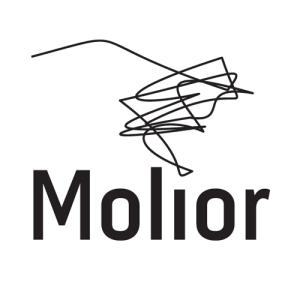
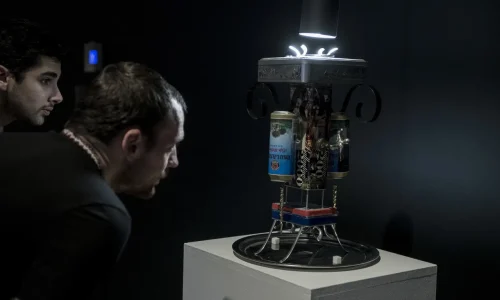

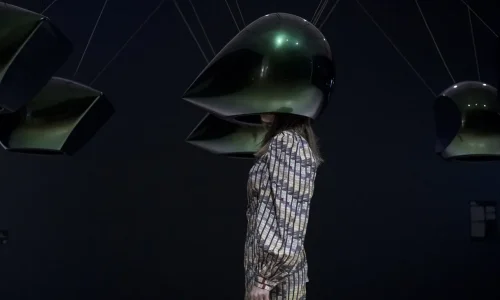
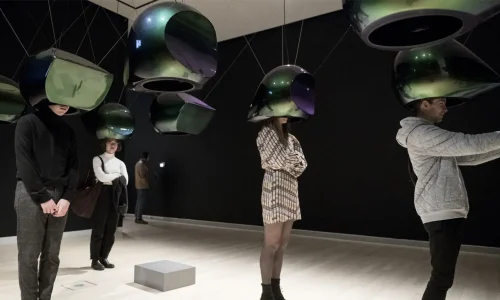
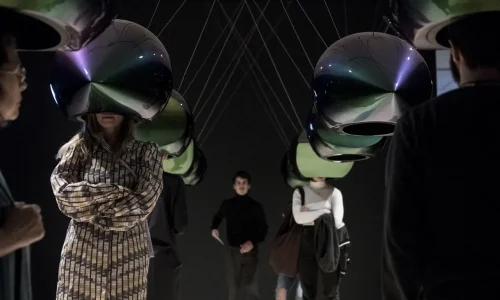
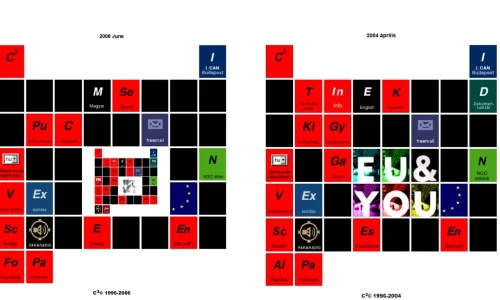
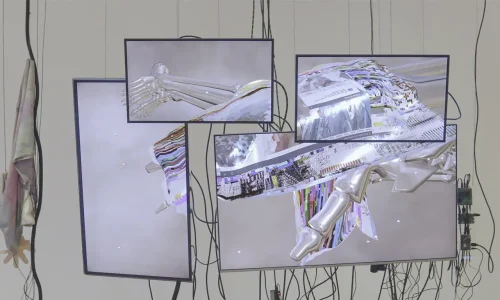

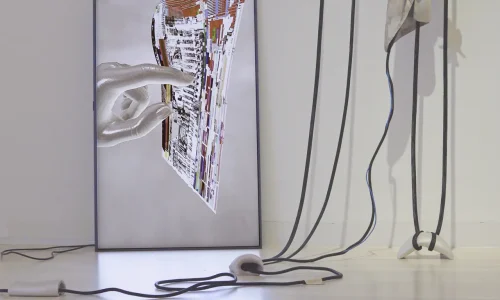
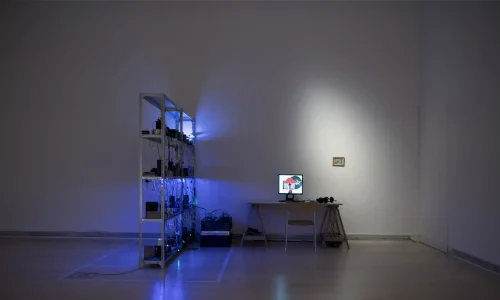
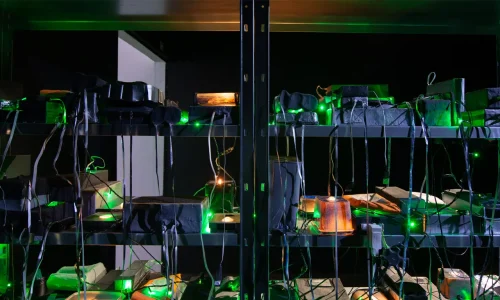
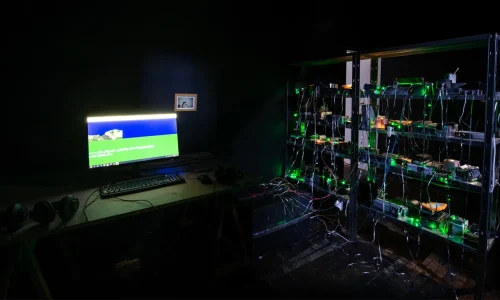
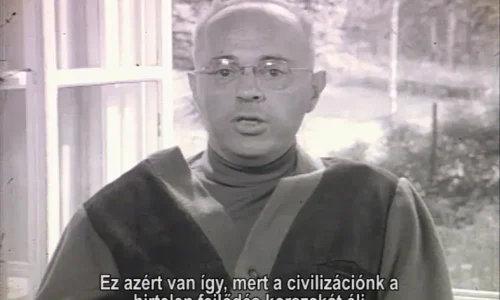
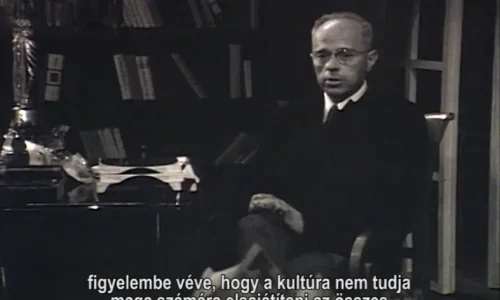
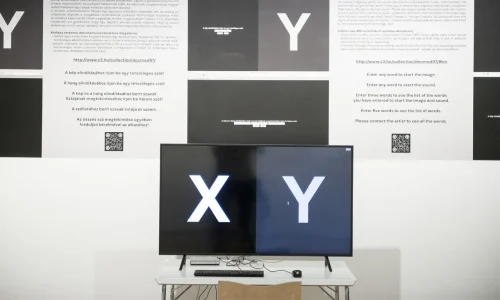
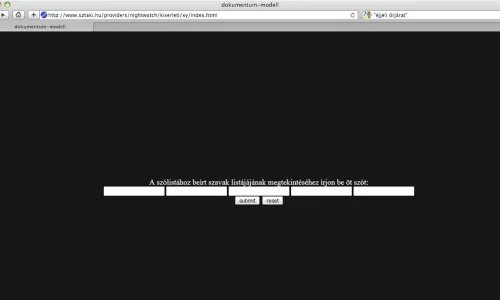
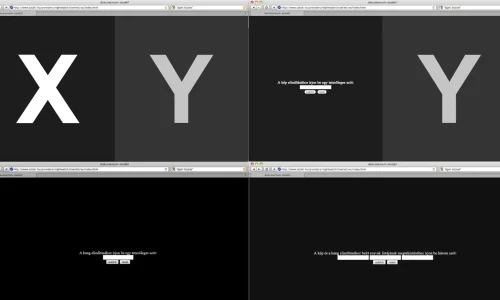
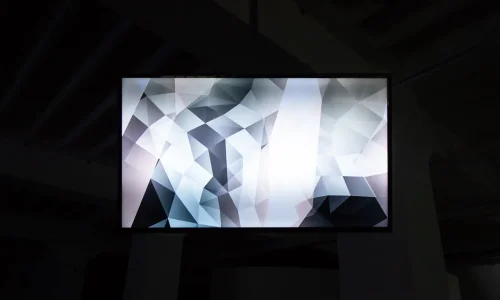
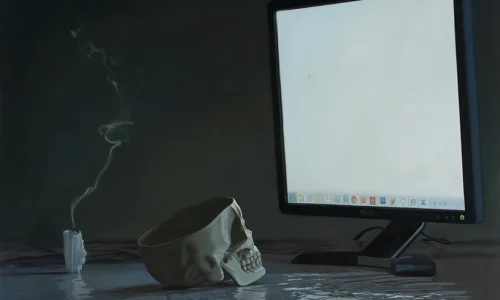
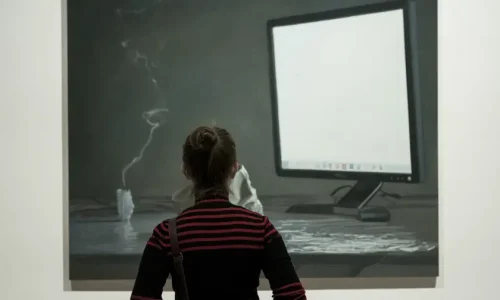
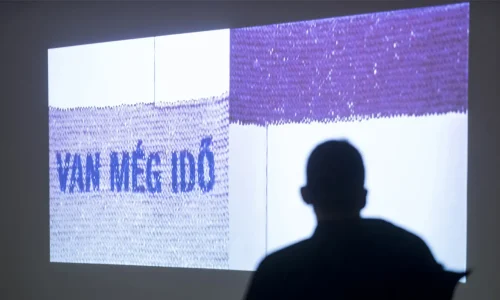
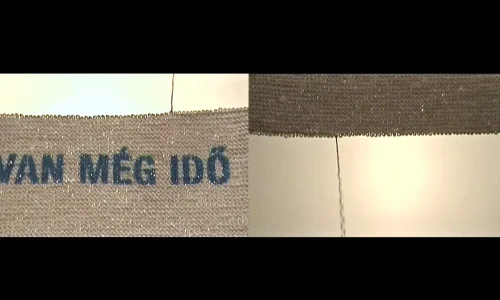
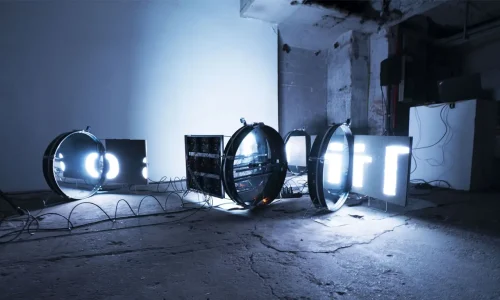
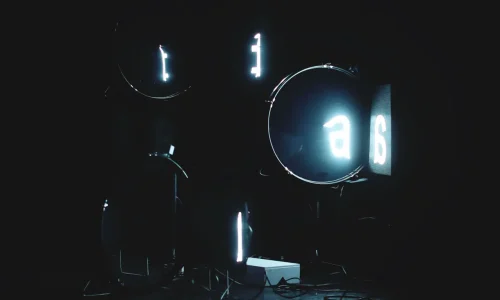
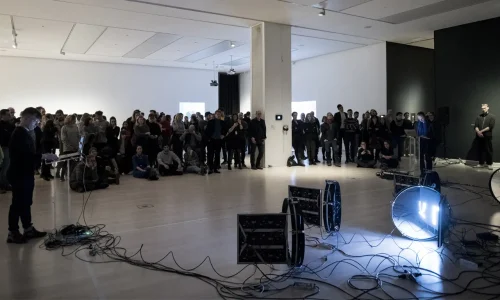
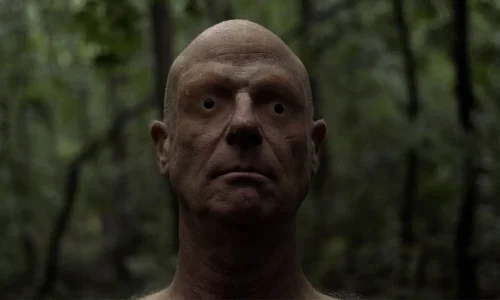
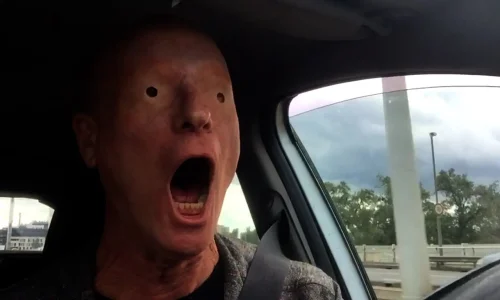
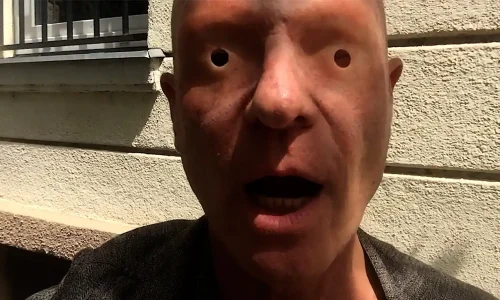
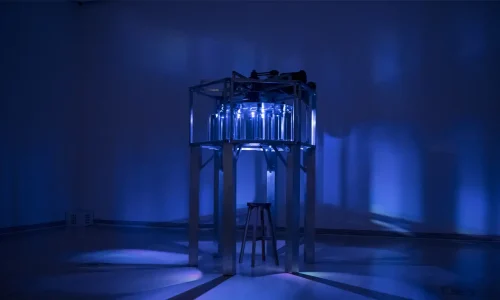

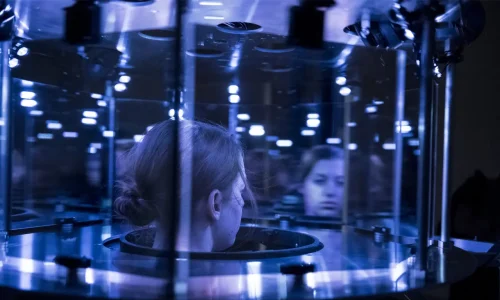
![Romain & Simon de Diesbach, [I], 2017 Presented at the Ludwig Museum for the Dead-Web exhibition in Budapest, Hungary, 2020. Co-produced by Ludwig Museum and Molior.](https://molior.ca/wp-content/uploads/elementor/thumbs/Romain-Simon-de-Diesbach-I-Dead-Web-2020-q285wzgju3asiriaah8ycmncycao5qu4hdy71a50oo.webp)

